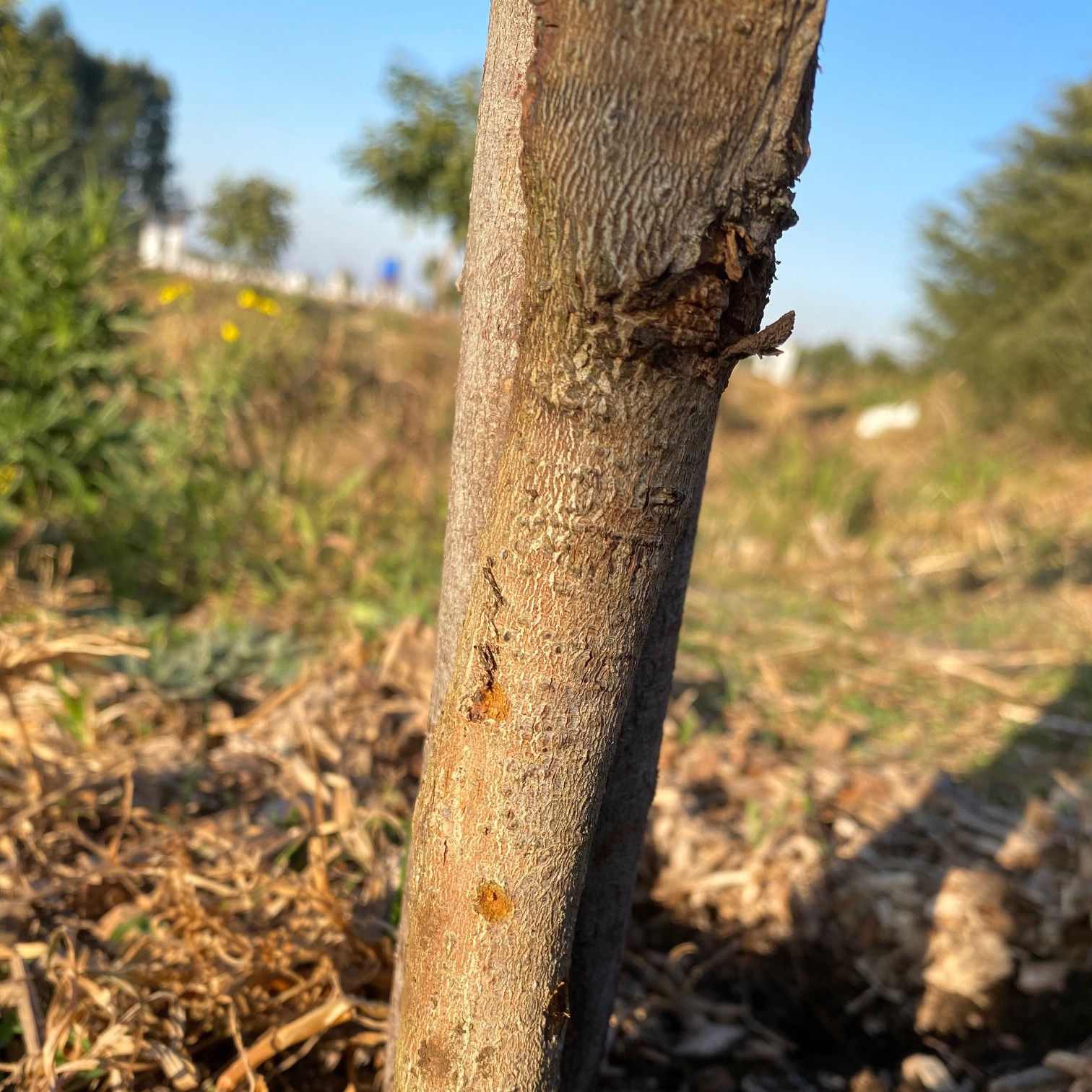Avocado branch canker is a fungal disease that affects avocado trees, caused by various species within the Botryosphaeriaceae family. It typically manifests as lesions or cankers on the tree's branches, often leading to dieback of affected branches and a decline in tree health. The disease can result in significant economic losses for avocado growers due to reduced yield and tree mortality.
These species are associated with disease symptoms such as leaf spot, stem or trunk canker, dieback, and fruit rot. Initial symptoms may include the formation of small, sunken lesions on the branches, which gradually enlarge and become necrotic. Cankers may girdle branches, leading to dieback. Infected trees may exhibit wilting, leaf drop, and overall decline in vigor. Cankers associated with species from the Botryosphaeriaceae family are necrotic with a friable bark that often has a whitish hard exudate, when the canker is cut open, it is discoloured (reddish brown). The cankers are characterized by V-shaped discoloration towards xylem tissues.
Factors Contributing to Disease Development: Environmental factors such as high humidity, rainfall, and wounds from pruning or mechanical damage can predispose avocado trees to infection. Additionally, stress factors like drought or nutrient deficiencies may exacerbate the severity of the disease.
Management strategies for avocado branch canker typically involve cultural practices to promote tree health and minimize stress, such as proper irrigation and fertilization. Additionally, pruning practices to remove infected branches can help reduce disease spread.
Overall, avocado branch canker poses a significant challenge to avocado growers, requiring proactive management strategies to mitigate its impact on orchard productivity and tree health. Ongoing research into disease epidemiology, host-pathogen interactions, and integrated pest management approaches is essential for effective disease control in avocado cultivation.
The ARP aims to:
-
Identify Botryosphaeriaceae species associated with branch canker and die-back on avocado trees in South African orchards and nurseries.
-
Find the most prevalent Botryosphaeriaceae species in South African avocado nurseries and orchards.
-
Evaluate the pathogenicity of the Botryosphaeriaceae species against commercial-grown avocado varieties in South Africa.
-
Evaluate the impact of drought stress on avocado branch canker symptom development.
ARP Team Members
Makhosazana (Khosi) Ngema
Heike Möller

Images from left to right: 1-3. Wedge shape discoloration caused by Botryosphaeria species.


